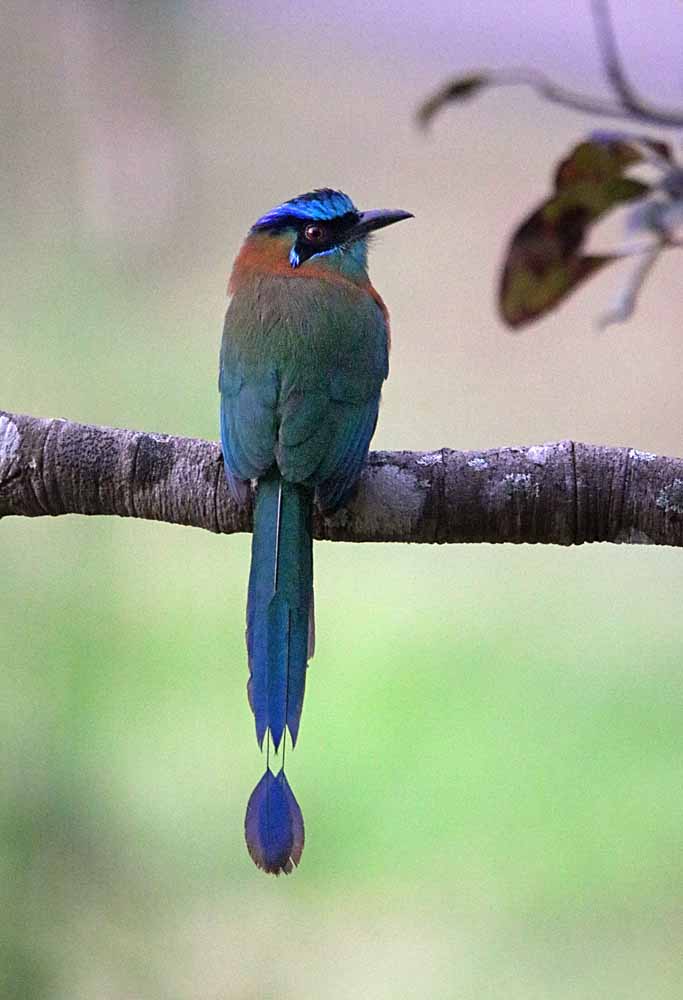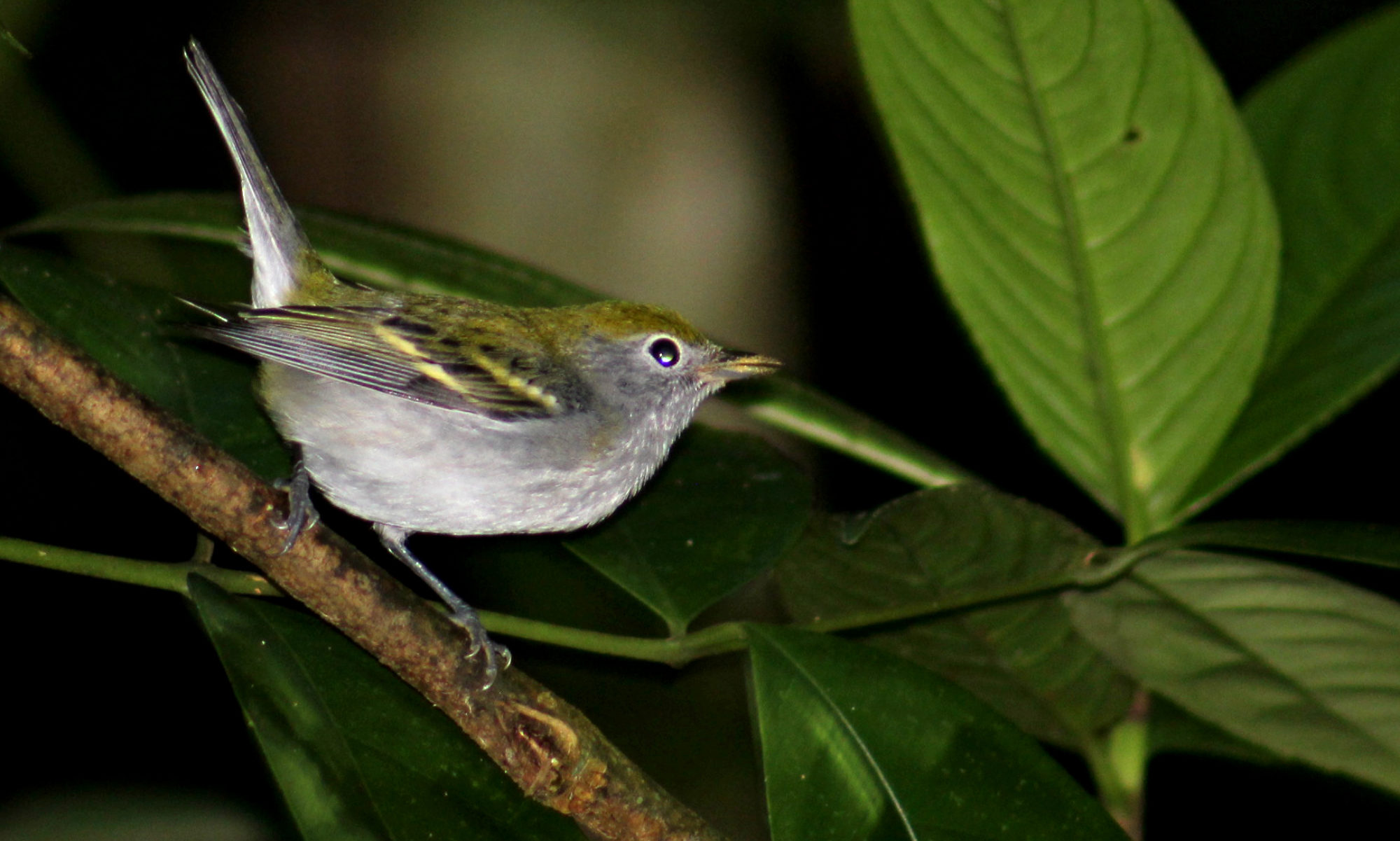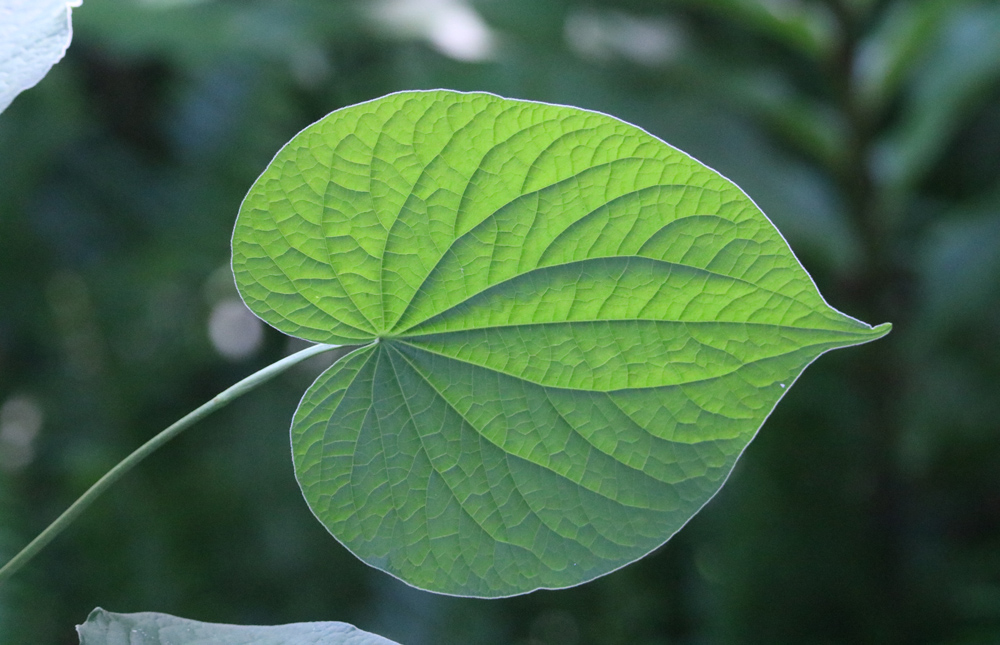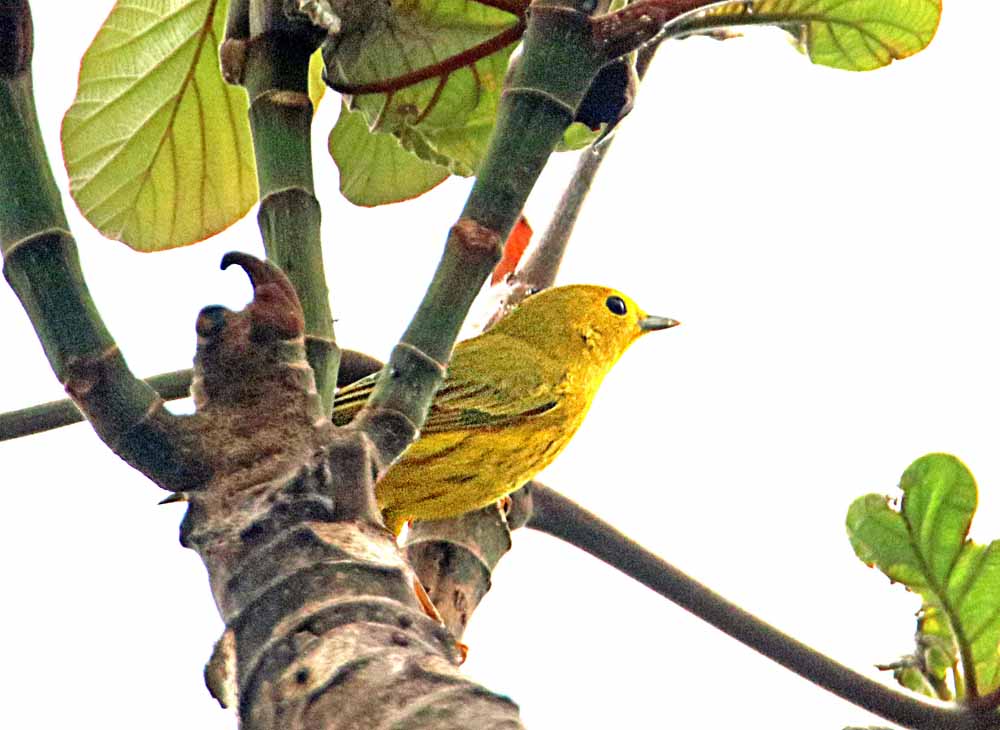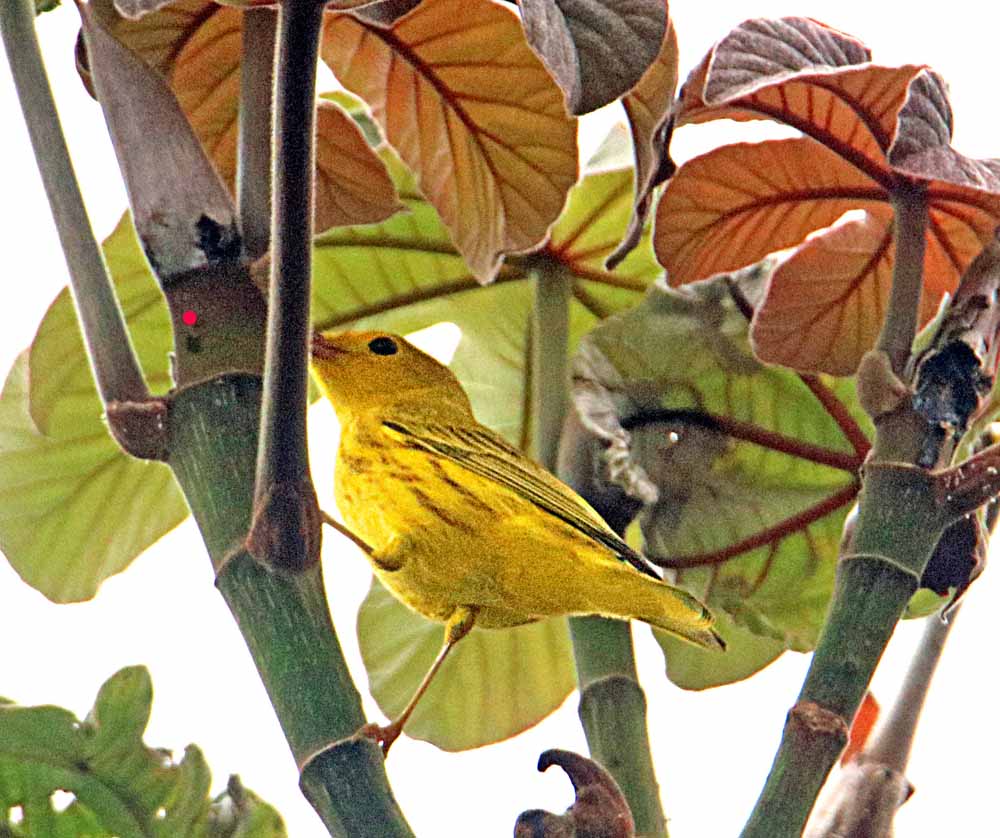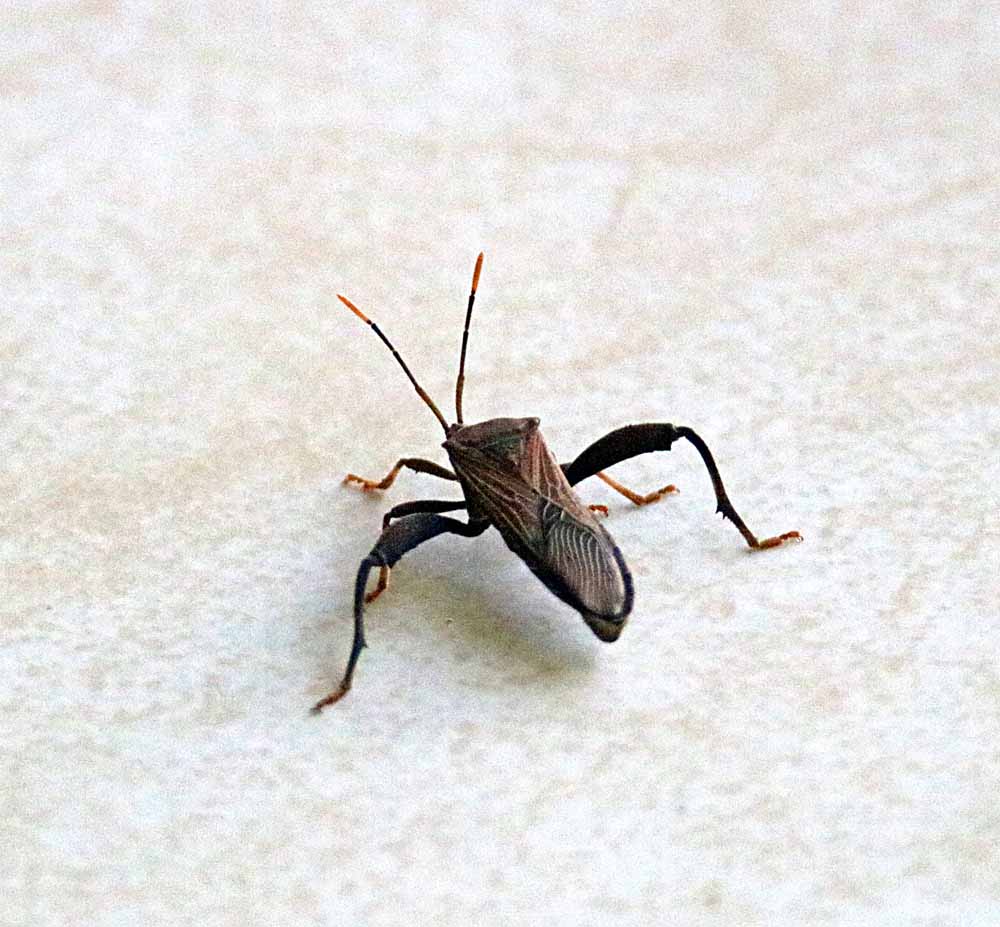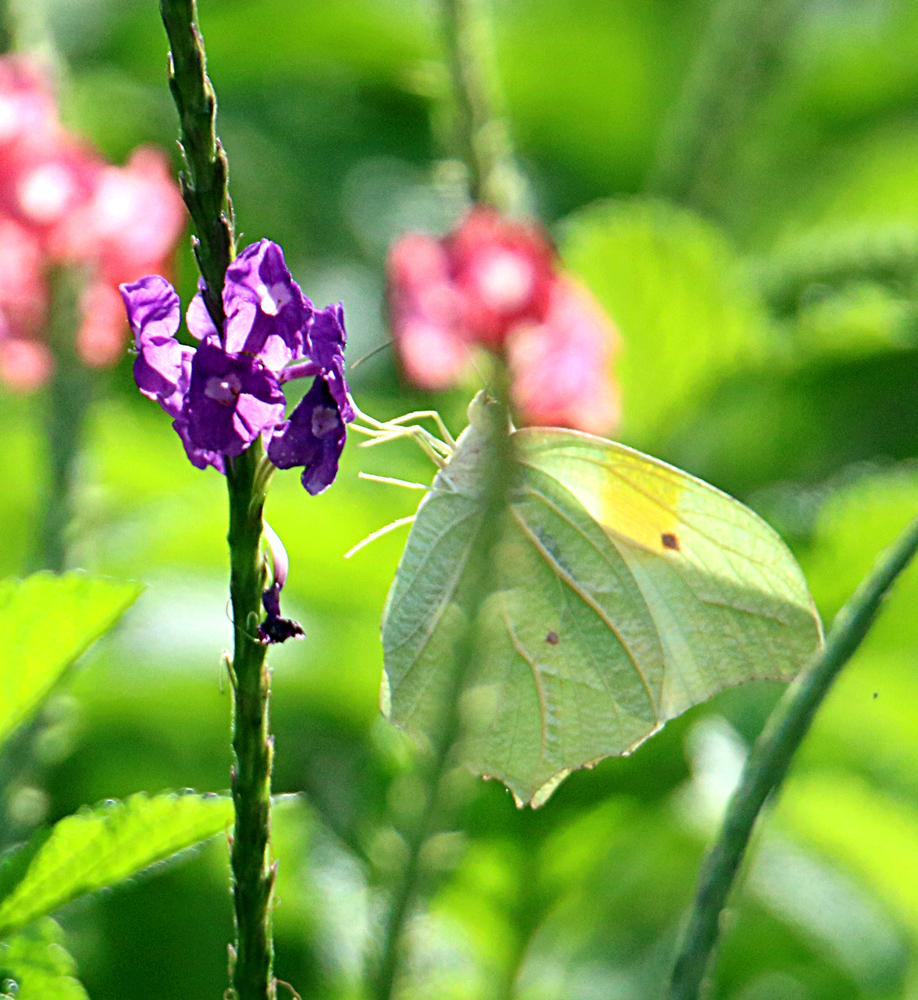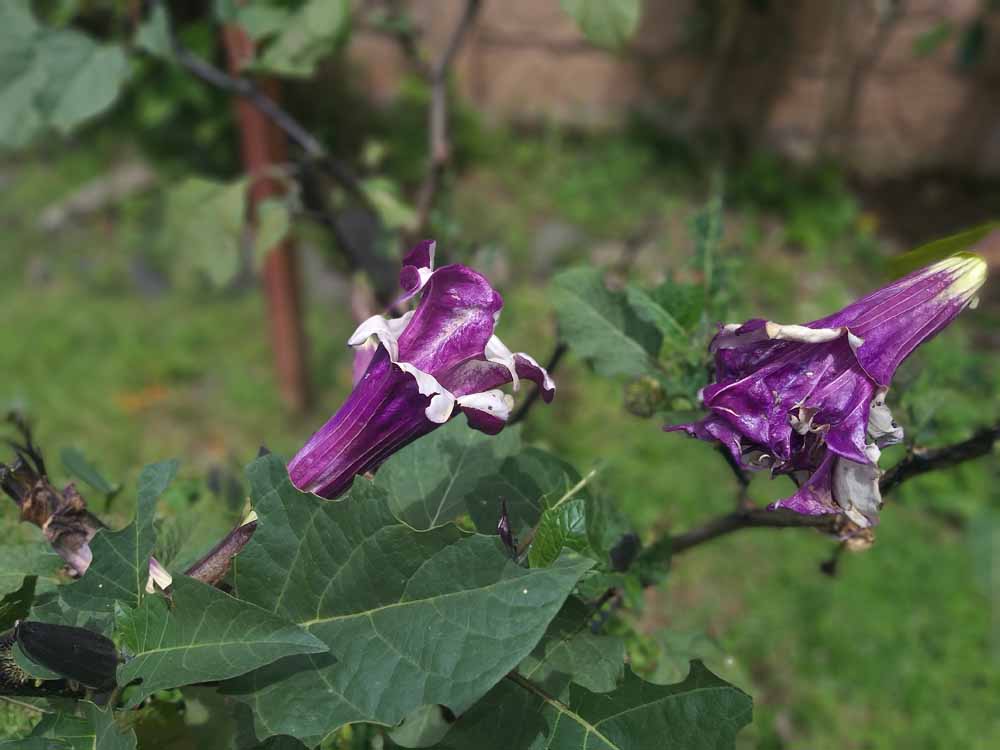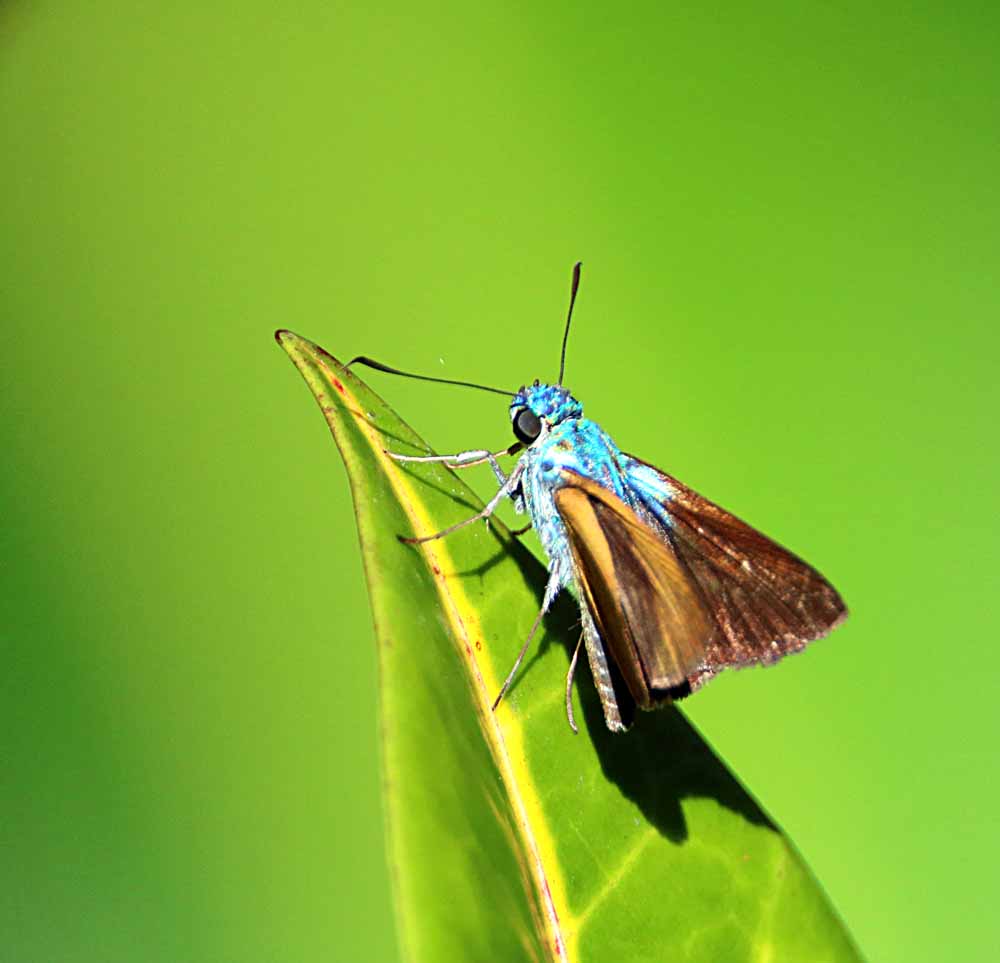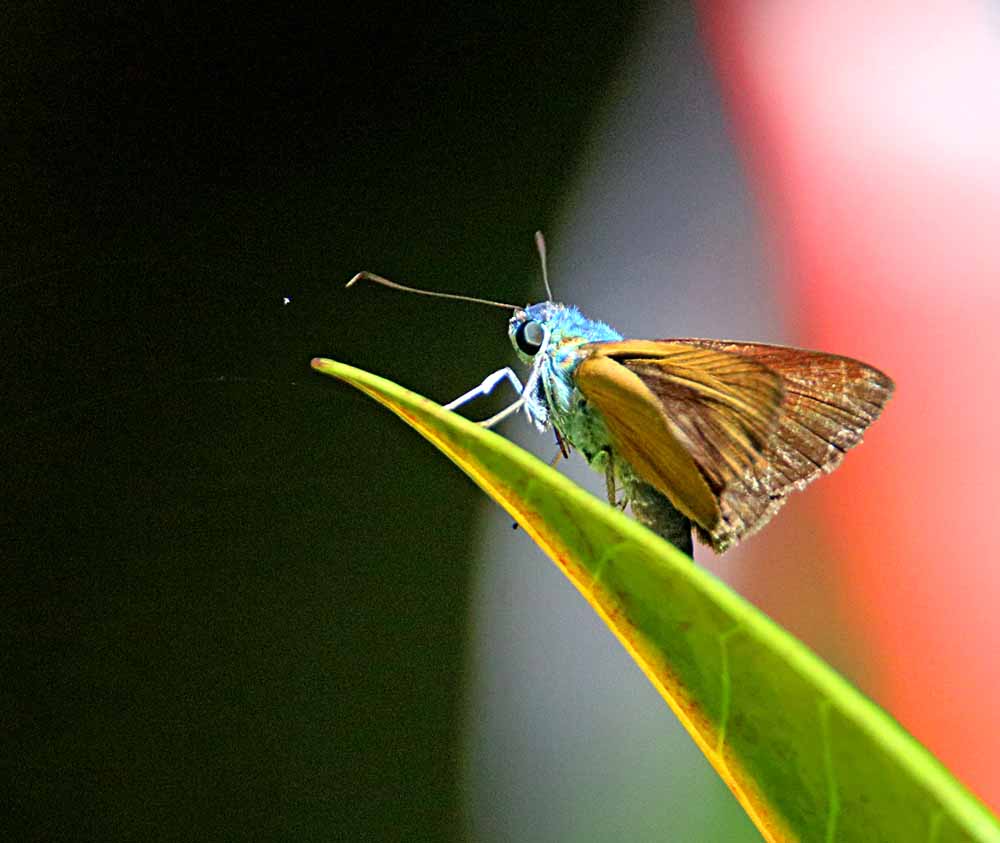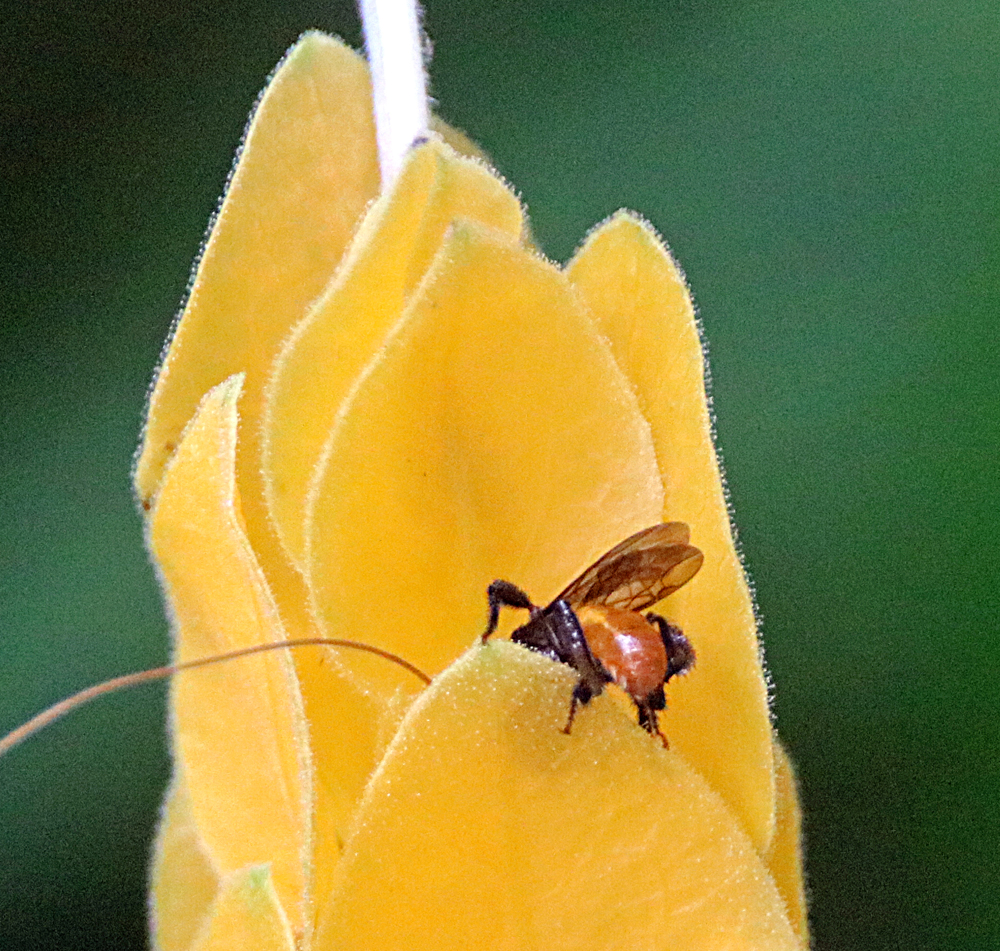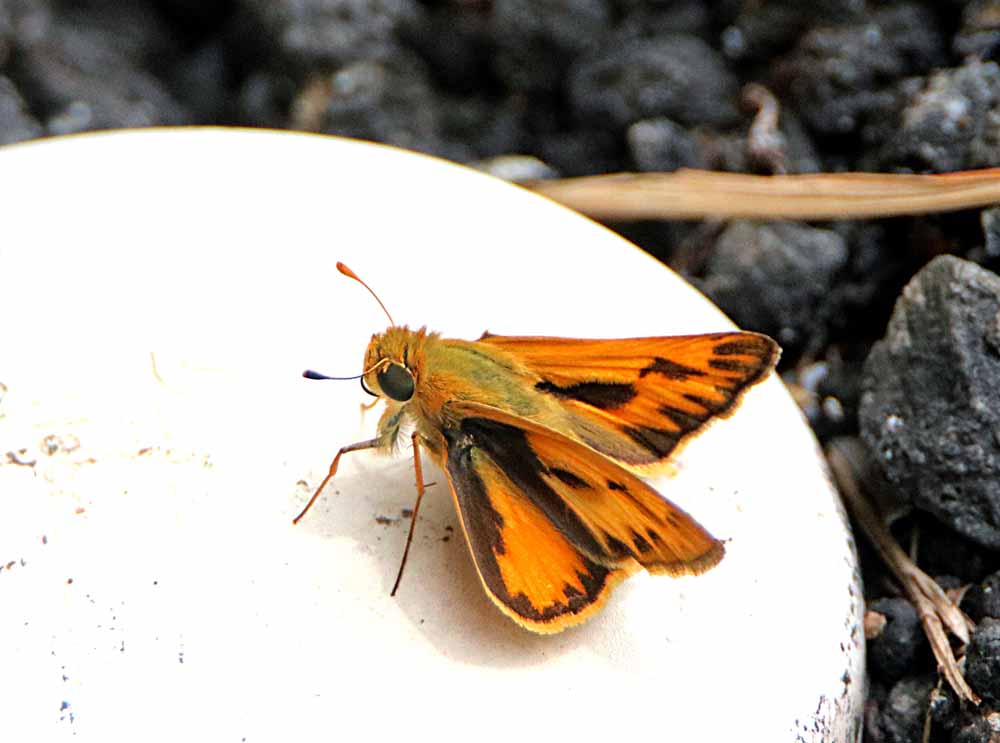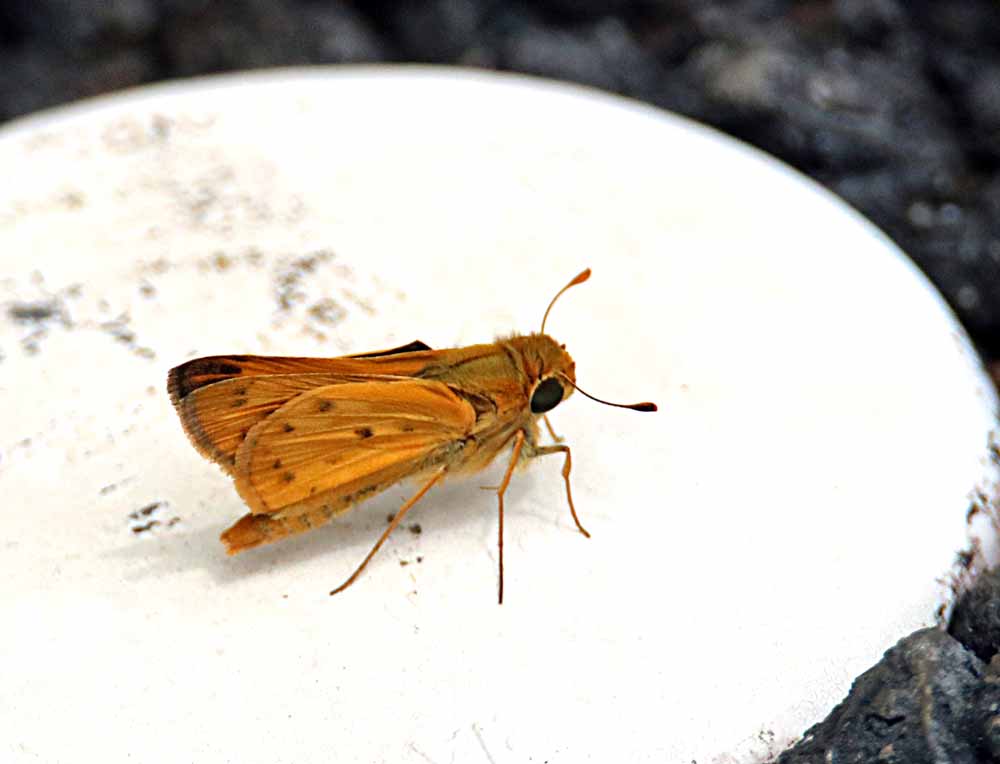In some ways I’m glad the visits aren’t every day, so I can get excited and enjoy the occasional visits of a neighborhood Lessons Motmot, Momotus lessonii (my gallery link). It lives solely in Central American lowland forests and in Costa Rica more on the Pacific Slope than the Caribbean Slope, though it is seen in the some inland forests on the Caribbean side, while the similar but less-seen Turquoise-browed Motmot (my gallery link) lives only on the Pacific Slope. I have had both in my garden, but many more of the Lesson’s. The species name of “Motmot” comes from an early morning hooting like an owl that the motmots make. 🙂 In both photos he is in a Nance Tree in my garden.
